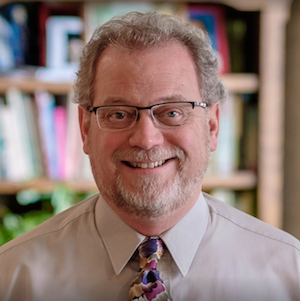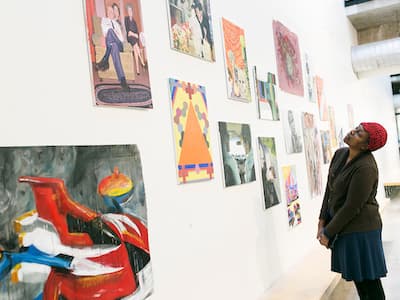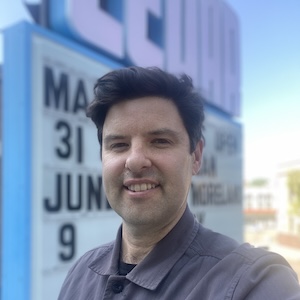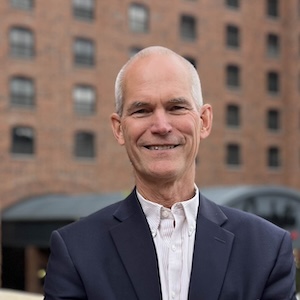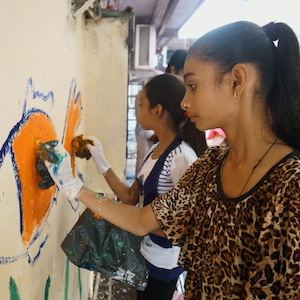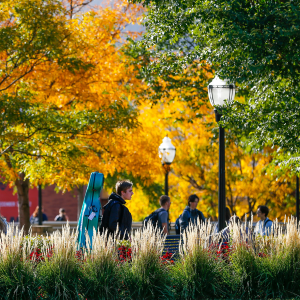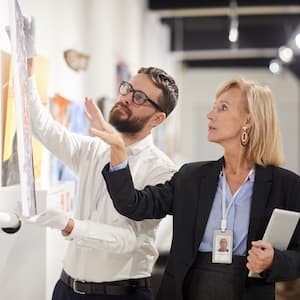Insights from Director of Graduate Studies Tom Borrup
The Arts and Cultural Leadership master’s program has changed in a number of ways—some may be more obvious, others less so—in order to stay relevant, innovative, and career-focused. We asked director of graduate studies Tom Borrup just what these changes are and what they mean for students.
1. Redefining What Leadership Means
The ACL program has broadened its thinking about the ways in which students apply their leadership. A still-important dimension, on which the program was founded, was to prepare students to be effective chief executives of nonprofit arts and culture organizations. We now understand that arts and cultural leadership can (and needs to) come from people in all roles within organizations and within communities.
2. Broadening Career Opportunities
In addition to nonprofit leaders, our graduates are entrepreneurs who start new ventures. They are advocates or volunteers in the community working for cultural and social equity; they work in philanthropy and government; they are artists engaged in social change work; they are teachers who help their students develop their creativity and express their unique cultures... and more. The ways in which ACL students and graduates further their goals represent an ever-growing list. As such, ACL has welcomed a wider mix of applicants and students who share a passion for creativity and culture as well as for making a difference in the world.
"Arts and cultural leadership can (and needs to) come from people in all roles within organizations and within communities."
3. Addressing Equity
In doing the above, we've leaned more on the "culture" in arts and cultural leadership, while in the past the focus was more on the "arts." This enables the program and the students to address equity in more profound ways. The "arts" can be a limiting framework, one that is mostly associated with white or western European structures and forms of expression. We think that "culture" (which still has its issues as a term) opens up to more ways of life and more forms of expression. Everyone has a culture and is part of one or more cultures.
4. Reexamining the Curriculum
While many of the course names are the same or similar, they have all been revamped and the distribution of credits favors leadership and entrepreneurship, with a new introductory course (Multiplicity of Ways) exploring different culturally based approaches to seeing, understanding, and expressing. This replaces a course that introduced students to standard academic methods. The balance of required and elective courses remains the same, as does the option for students to fashion a set of electives to their interests. The curriculum now focuses more on personal and professional leadership development. As such, each student has unique aspirations as well as talents and hopefully we help them sharpen both.
5. Expanding Focus Areas
We have constructed several focus areas or specializations to guide students in seeing a range of possibilities. These include Organizational Leadership, Creative Placemaking Leadership, and Public Sector Cultural Leadership. Some students construct their own specializations and take advantage of the amazing offerings across the University in design, public policy, nonprofit management, urban studies, art, education, and so many others. Our own electives have evolved to include excellent classes in financial management, imagination in action, and creative placemaking.
"Each student has unique aspirations as well as talents and hopefully we help them sharpen both."
6. Customizing the Capstone Experience
The capstone experience for students in their final year focuses more on the unique passions and aspirations of students. When I began leading the capstone experience, students had been assigned a nonprofit to work with in a sort-of consulting role. That remains an option for students, but they now build on their specialization and construct their own projects that can take different forms, or a mix of forms, such as videos, podcasts, zines, and other forms of expression in addition to writing.
7. Growing the Faculty
The faculty, all of whom are working professionals, have changed over the past 10 years, as is not unusual with community faculties in professional programs. They are all leaders from the field of arts and culture in the Twin Cities community. It is a very diverse and highly engaged group. For me, faculty meetings are a joy, as everyone is passionate about the students, the community, and the program. They bring excellent ideas and offer their help as we constantly review and update the program.
The Arts and Cultural Leadership Masters remains a work in progress. Courses, specializations, ways of working with students to personalize their degree focus are all evaluated to keep the program fresh and in touch with changes in the field, in our communities, and in the needs of students. We also continue to grow the network of alumni and community leaders through the faculty, a stellar advisory board, and the students themselves, as well as events focusing on contemporary topics in the field.

